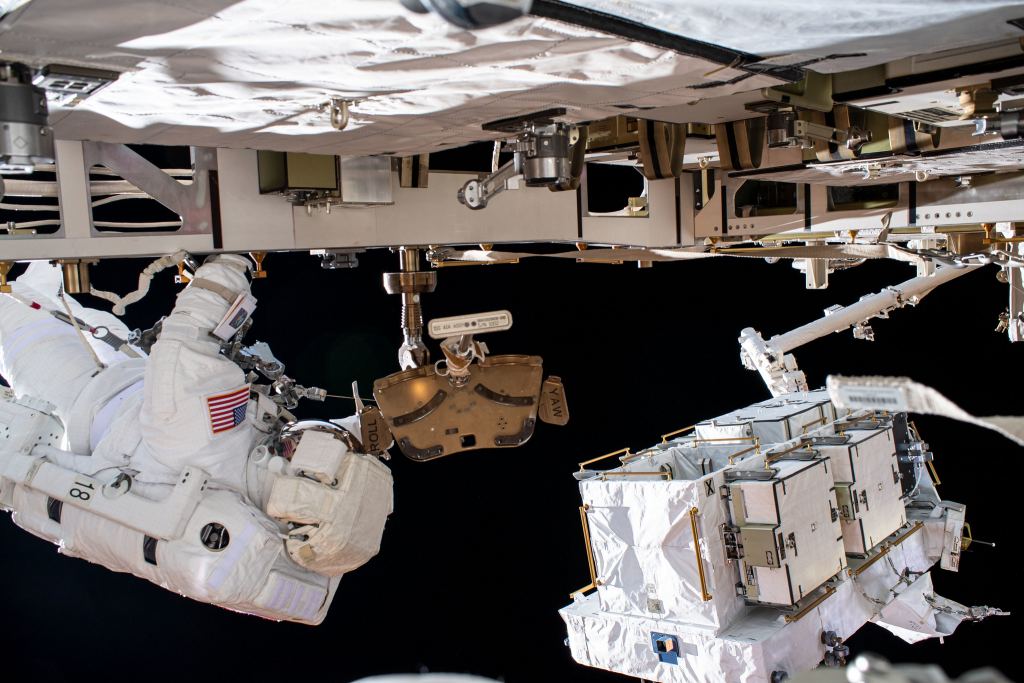
Oops
Dropping a mirror on Earth is less of a concern, perhaps about the potential for some looming misfortune. Dropping a mirror while on a spacewalk means creating a potentially dangerous new piece of space junk, as thousands of people watch it happen, broadcasting live.
A small mirror was detached from the space suit of International Space Station Commander Chris Cassidy at the start of a spacewalk on June 26, 2020.
The mirror floated away just after Cassidy emerged from the ISS in orbital darkness to begin a six-hour EVA to update the power systems outside the station. Spacewalk astronauts have mirrors on each sleeve for better views while working, as space suit helmets limit the field of view. The mirror measures just 5 by 3 inches (7 by 12 centimeters), and according to the Associated Press, along with its band, it has a mass of just one-tenth of a pound (50 grams).
Cassidy inspected the sleeve of her spacesuit later, while she was in the sunlight, but saw no clue that could explain why the mirror came off. NASA later said the lost item posed no risk to either the spacewalk or the ISS.

NASA lists more than 20,000 pieces of debris larger than a softball that orbits Earth. There are 500,000 pieces of rubble the size of a marble or larger and there are many millions of rubble that are so small that they cannot be traced. All of these pieces, whether intact satellites or parts of satellites or rockets, travel at speeds of up to 17,500 mph, which is fast enough that even a relatively small piece of orbital debris damages a satellite or spacecraft. Small spots of paint can damage a spacecraft when it travels at these speeds. In fact, several windows of the space shuttle had to be replaced due to damage caused by the material that was analyzed and shown to be paint stains.
“The greatest risk to space missions comes from untraceable debris,” said Nicholas Johnson, NASA chief scientist for orbital debris.
Space debris remains a problem without a definitive solution. There have been designs for space nets, harpoons, or vacuum cleaners to pick up small debris. But some say the most effective way to solve the space debris problem is an international agreement to charge operators “orbital use fees” for each satellite put into orbit. Not a word about the possible “user fees” for any item lost during a spacewalk.

Cassidy and astronaut Bob Behnken carried out the first of four spacewalks to improve the station’s power system. Last Friday, veteran spacewalkers spent six hours and 7 minutes swapping five nickel-hydrogen (NiH2) batteries with two new lithium-ion (Li-Ion) batteries. They’ll be out again on Wednesday, July 1 starting at 7:20 am EDT to swap one more NiH2 battery for a Li-Ion battery in the Starboard-6 armor frame.
Space station managers are also planning two more spacewalks in July to continue battery upgrades.